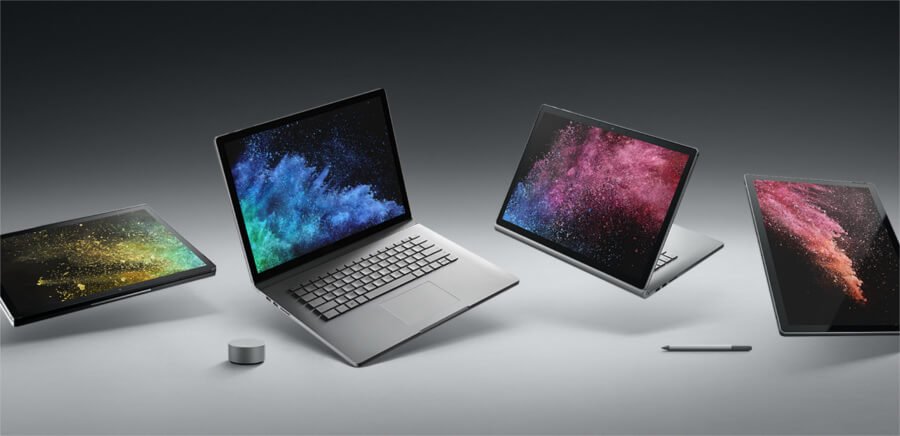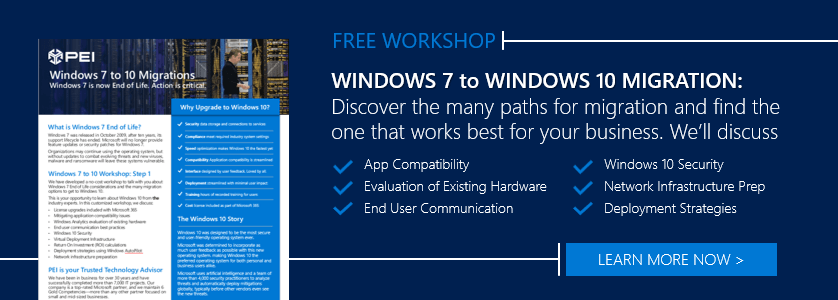
Windows 7 Reaches End of Support on January 14, 2020
Windows 7 will reach end of support early this year—January 14th, 2020—just a few months after it officially reached the ten-years-old mark. As with most new technology, it’s a bit worse for wear after ten years, and Microsoft has decided that it’s time for those still using Windows 7 to move on.
As usual, Windows 7 will still continue to work normally after this date, but your Windows 7 devices will no longer receive critical security updates or be eligible for Microsoft support. This means your devices will be vulnerable to malicious attacks, data loss, corruption, and more.
Is There Really a Security Risk?
According to estimates by ZDnet, there might be as many as 200 million PCs worldwide still running Windows 7. Some of us might see this number and think, “All right, so I’m not alone,” and use this as an excuse to put off the update. If 200 million people are in the same boat, the decision to remain on Windows 7 doesn’t seem as bad.
But, let’s look at this situation from a hacker’s perspective. If I’m a hacker, I want to focus my energy on attacks that will affect as many people as possible at one time to increase my chances of success while cutting down on effort—200 million devices is a pretty tempting audience to target.
If a major vulnerability for the operating system is discovered on January 15th, Microsoft will not release a patch to protect your system against hackers—who now know how to compromise 200 million devices in one fell swoop.
To compound this effect, as malicious attacks get more advanced, it will be even easier for hackers to target the aging security protocols that are “frozen in time” on your PC.
Okay, But What Are My Options?
Unfortunately, if you own or make IT decisions for your organization, you know it’s not as easy as just deciding you need to make a switch. The logistics of finding new devices, creating and implementing new management policies, trying to maximize returns on previous investments, keeping legacy apps functioning, and more can make this move almost impossible without more than a few headaches.
While we can’t promise you’ll escape this ordeal headache free, we can let you know that there are a few different options to meet your business where it’s at.
Buying Time to Make the Change
If you’re not sure your business is ready for this change, you can buy yourself some time.
Extended Security Updates
You can purchase Extended Security Updates to keep your systems secure while creating your plan for moving to Windows 10. Extended Security Updates will need to be purchased each year and will be available for the next three years.
These updates include critical security updates—not bug fixes or other types of updates—and are available for Windows 7 Professional and Windows 7 Enterprise.
To purchase Extended Security Updates, you’ll need to work with a Microsoft CSP partner—like PEI. You can purchase these updates at any time, even if the end of support date has already passed.
Making a Lateral Move to Windows 10
Upgrade Current, Compatible Devices to Windows 10 Pro
If your devices meet the minimum specifications for Windows 10, you can purchase Windows 10 for these devices and upgrade them without purchasing new hardware.
Purchase New Devices
If your devices are not compatible with Windows 10, you can purchase new Windows 10 devices.
Invest in a Modern Future with a Modern Desktop with Microsoft 365
Windows 7 is not the only major technology reaching end of support for Microsoft this month. Office 2010 is following later this year—and has no extended security options available. For businesses interested in making a more complete shift to a Modern Desktop experience that includes both Windows 10 and Office 365, you can upgrade to Microsoft 365.
Microsoft 365 is a subscription service that includes Windows 10, Office 365, and the Enterprise Mobility + Security Suite (varying licenses available with different subscriptions). Because Microsoft 365 is a subscription service, you’ll never have to worry about huge upgrades or your software investments reaching end of support. You’ll always have the latest versions of Office and Windows.
Worried About App Compatibility?
One of the most common reasons we see businesses put off an operating system upgrade for is worries about application compatibility. For the upgrade to Windows 10, Microsoft has put in a lot of work, deeming Windows 10 and Office 365 the “most compatible upgrades ever.” The Desktop App Assurance Team evaluated 7,000 applications suspected to have issues and found only 49 applications that required additional assistance with the upgrade.
Qualifying customers moving to a Modern Desktop deployment can receive free assistance from the Desktop App Assurance Team to make your move to Windows 10 a success for every single application.
What Should I Choose?
As you probably already know, there’s no one-size-fits-all solution that will work for your business. Each organization comes with their own circumstances that will inform each step of this transition.
A great place to start is to see how many Windows 7 devices your business has using our obligation-free Detection Assessment.
If you already know this information, contact PEI about creating a strategy to keep your business protected—whether you’re ready to make a switch or need to buy more time.
Stephanie Hamrick, PEI





